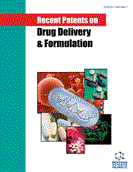Abstract
The brain is a delicate organ, and nature has very efficiently protected it. The brain is shielded against potentially toxic substances by the presence of two barrier systems: the blood brain barrier (BBB) and the blood cerebrospinal fluid barrier (BCSFB). Unfortunately, the same mechanisms that protect it against intrusive chemicals can also frustrate therapeutic interventions. Despite aggressive research, patients suffering from fatal and/or debilitating central nervous system (CNS) diseases, such as brain tumours, HIV encephalopathy, epilepsy, cerebrovascular diseases and neurodegenerative disorders, far outnumber those dying of all types of systemic cancers or heart diseases. The abysmally low number of potential therapeutics reaching commercial success is primarily due to the complexity of the CNS drug development. The clinical failure of many probable candidates is often, ascribable to poor delivery methods which do not pervade the unyielding BBB. It restricts the passive diffusion of many drugs into the brain and constitutes a significant obstacle in the pharmacological treatment of central nervous system (CNS) disorders. General methods that can enhance drug delivery to the brain are, therefore, of great pharmaceutical interest. Various strategies like non-invasive methods, including drug manipulation encompassing transformation into lipophilic analogues, prodrugs, chemical drug delivery, carrier-mediated drug delivery, receptor/vector mediated drug delivery and intranasal drug delivery, which exploits the olfactory and trigeminal neuronal pathways to deliver drugs to the brain, are widely used. On the other hand the invasive methods which primarily rely on disruption of the BBB integrity by osmotic or biochemical means, or direct intracranial drug delivery by intracerebroventricular, intracerebral or intrathecal administration after creating reversible openings in the head, are recognised. Extensive review pertaining specifically, to the patents relating to drug delivery across the CNS is currently available. However, many patents e.g. US63722506, US2002183683 etc., have been mentioned in a few articles. It is the objective of this article to expansively review drug delivery systems for CNS by discussing the recent patents available.
Keywords: Patents, drug targeting, CNS, BBB, nanoparticles, liposomes, polymers
 142
142














